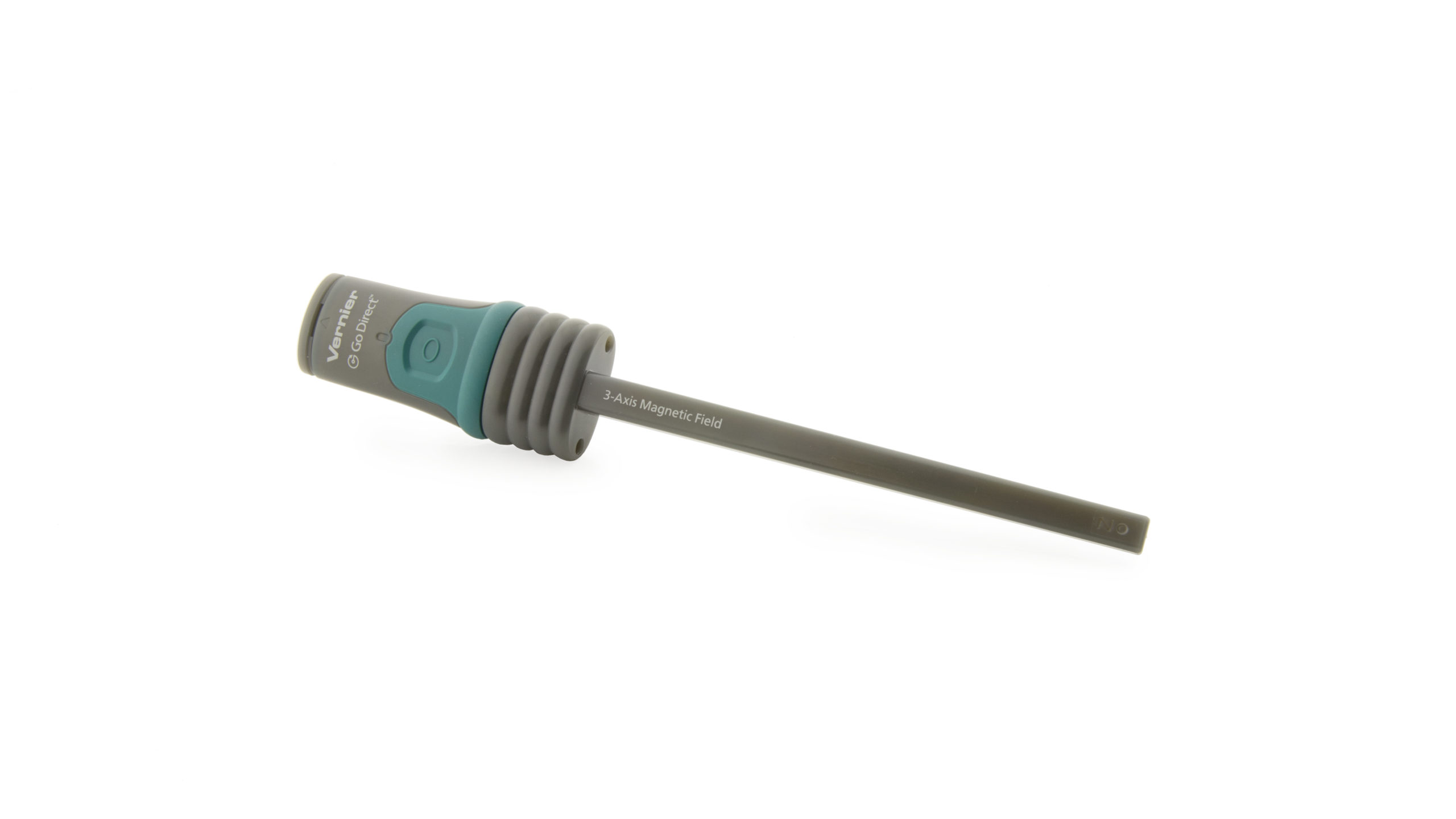Troubleshooting
Primary Test: Press the power button on the sensor to turn it on. Connect your sensor as described in the Getting Started instructions for your device. (The green LED will flash to indicate the sensor is connected.)
- Move the sensor near a permanent magnet and check for the magnetic field readings to change.
- Check both the ±5 mT and ±130 mT sensors in all three dimensions.
Additional Troubleshooting
- When I hold the tip of the Go Direct 3-Axis Magnetic Field sensor next to the pole of a magnet, the sensor reads zero
- Is the Go Direct 3-axis Magnetic Field Sensor submersible?
- How do you calibrate the GDX-3MG sensor?
- How can I more precisely measure a magnetic field using a Vernier magnetic field sensor?
- Channel Numbers for GDX Sensors in Python and other coding languages
- What are the temperature limitations on the Go Direct 300 mAh battery?
- Go Direct sensor does not connect to LabQuest 2 via Bluetooth.
- How do I replace the battery in a Go Direct Wand-Type Sensor?
- Troubleshooting Bluetooth Connections with Go Direct Sensors
- What can I do if a Go Direct sensor's Bluetooth LED flashes red and green when I try to connect to it and the connection fails?
- Will my device work with Go Direct Sensors via Bluetooth?
- How do I know if my LabQuest will work with Go Direct Sensors and Go Wireless devices?
Specifications
- Measurement ranges: ±5 mT and ±130 mT
- Resolution:
⚬ ±5 mT range: 0.00015 mT
⚬ ±130 mT range: 0.1 mT - Operating temperature: –40°C to 85°C
- Maximum data-collection rate: 50 Hz
- Dimensions: 19 cm long, wand portion 12.2 cm long.
⚬ Wand tapers from 0.8 cm square at handle to 0.7 cm square at tip.
⚬ Designed to be placed inside a solenoid if needed. - Sensor Location
⚬ ±5 mT sensor: ~5 mm from the wand tip (indicated by the dot on the sensor tip)
⚬ ±130 mT sensor: ~10.5 mm from the wand tip - Connections:
⚬ Wireless: Bluetooth® v4.2 (wireless range 30 m unobstructed)
⚬ Wired: USB 2.0 full speed - Battery: 300 mA Li-Poly
⚬ Battery Life (single, full charge): ~24 hours continuous data collection
⚬ Battery Life (lifetime): 2 – 5 years (typical)
Calibration
Calibrate? No. The sensor is set to the stored calibration before shipping. It is not practical to calibrate the Magnetic Field Sensor without reference to a known source of magnetic field.
It is useful, however, to zero the Magnetic Field Sensor. Position the sensor, and zero it using the data-collection software. Then, move the magnetic field source (but not the sensor) to explore the spatial variations of the field.
Battery Troubleshooting
- If the sensor can be turned on when connected by USB but not when disconnected from USB, the battery either needs charging or has reached its end of life and can no longer hold a charge.
⚬ First, try charging the sensor for several hours. - If the sensor still won’t turn on when disconnected from USB, try swapping the battery with a working sensor to see if the problem follows the battery or stays with the sensor.
⚬ If the problem stays with the sensor, the battery is probably not the issue.
⚬ If the problem follows the battery, the battery has likely reached its end of life. - If you intend to use this sensor wirelessly, its battery will need replacing.
Go Direct® 300 mAh Replacement Battery (GDX-BAT-300) - See How do I replace the battery in a Go Direct Wand-Type Sensor? for more information.
Rechargeable batteries are covered by a one-year warranty.
Batteries should last two to five years in typical use.
Related Products
- Micro USB to USB-C Cable (CB-USB-C-MICRO)
- Go Direct® Charge Station (GDX-CRG)
- Magnetic Field Sensor (MG-BTA)
Replacement Parts
- Go Direct® 300 mAh Replacement Battery (GDX-BAT-300)
- Micro USB Cable (CB-USB-MICRO)

